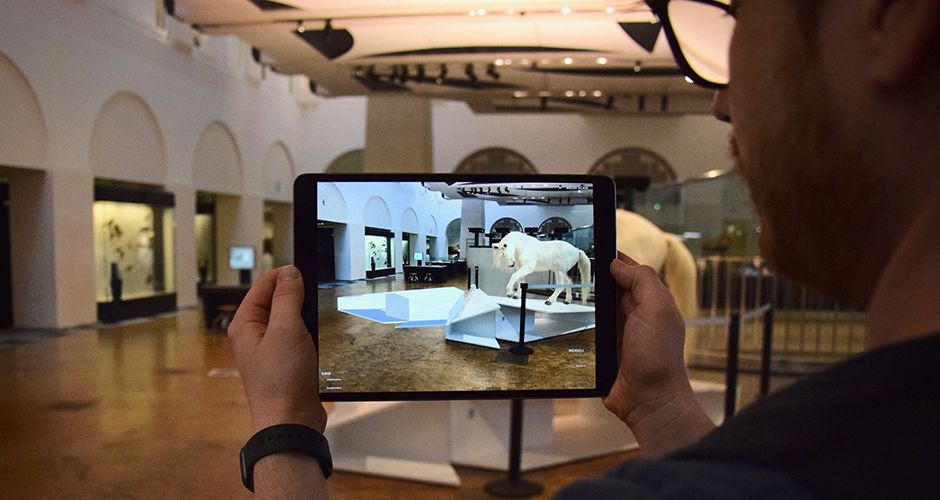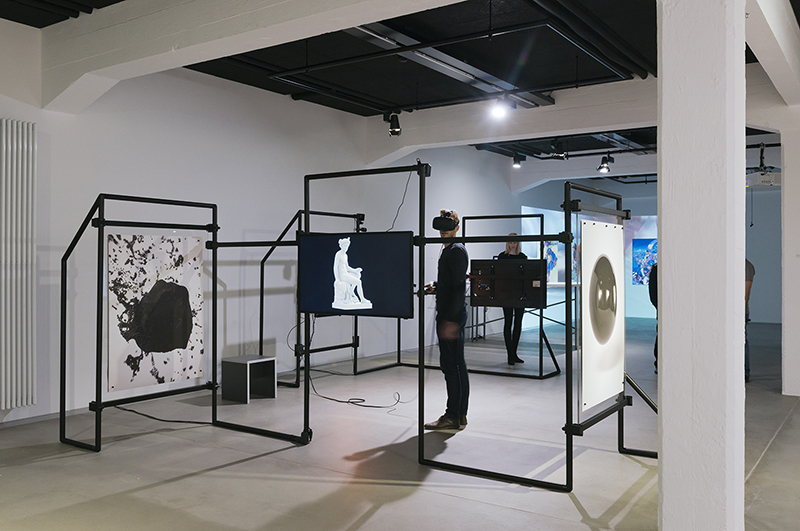🏛 The dry, dusty recitation of facts rarely captures people's imagination for long.
That's why today's museums focus on interactive experiences that make learning much more fun and exciting.
Please keep reading to learn what is an interactive museum, ideas to host it and tips to make the exhibit a blast.
Table of Contents
- Overview
- What is an Interactive Museum?
- Tips to Host an Interactive Museum Exhibition Effectively
- Ideas for Interactive Museums
- The difference between traditional and interactive museums
- How can museums be more interactive?
- Importance of an interactive museum exhibit
- Takeaways
Overview
| Who invented interactive museum? | Jeffrey Shaw |
| What are 5 famous interactive museums worldwide? | SPYSCAPE New York, ArtScience Museum Singapore, Cité de l’espace - France, Haus der Musik – Vienna and National Museum of Singapore. |
What is an Interactive Museum?
Traditional exhibits show you interesting objects, but interactive exhibitions let you actually experience them. You're not just a passive viewer - you're an active participant exploring new ideas.
Instead of simply putting artefacts on display, curators of interactive museum exhibits design interactive activities that bring the objects to life.
They use technology like touchscreens, simulation, and virtual reality to give context and tell the stories behind the objects.
Interactive exhibits tap into multiple senses - you can see, hear, touch, and even smell and taste parts of the experience.
You grasp the object by grasping the object - literally and figuratively. That kind of meaningful, immersive interaction creates an experience you'll never forget.

Make Your Event Interactive With AhaSlides
Add more fun with best live poll, quizzes and games, all available on AhaSlides presentations, ready to engage your crowd!
🚀 Sign Up for Free
Tips to Host an Interactive Museum Exhibition Effectively

Setting up an interactive museum requires a little bit of work, but it will surely pay off in the long run. And to make sure you grab the quintessential of it, using our 10 tips below as practical ideas for museum exhibits👇
1 - Make it hands-on. Visitors want to touch and manipulate objects, not just look at them. Provide interactive elements they can engage with physically.
2 - Tell a story. Connect the artefacts to a larger narrative that visitors can fall into and imagine themselves a part of. Make it relatable and compelling.
3 - Use multimedia. Combine audio, video, animations and graphics with physical elements to engage visitors' senses and maximise learning.
4 - Make it social. Design for small group collaboration and discussion. Learning becomes richer and more memorable through shared discovery.
5 - Provide context. Give visitors background on the artefacts - what, when, where, how and why they are important. Without context, objects have little meaning.
6 - Limit text. Use too much text and visitors become passive readers, not active explorers. Keep the text concise and supplement it with visuals and interaction.
7 - Set a clear goal. Identify the key themes, messages and takeaways you want visitors to walk away with. Then design the exhibit around achieving that goal.
8 - Test and iterate. Get feedback from test audiences and revise/improve interactive elements based on how well they help achieve the exhibit's learning goals.
9 - Make it challenging. The right amount of difficulty can motivate visitors to persist and expand their thinking. But don't make it frustrating.
10 - Allow for discovery. Give visitors some freedom to explore on their own terms rather than following a linear, prescribed path.
The overall aim is to get visitors actively engaged in exploring your artefacts in a memorable, meaningful way - using interaction, storytelling, multimedia and context. Testing prototypes with target audiences and refining them based on feedback will help ensure your final interactive exhibit truly comes to life for visitors✨
Ideas for Interactive Museums
#1. Augmented Reality (AR)

Augmented reality experiences make your exhibits come alive and share information in an unexpected, playful way.
Try an interactive multi-touch screen that rotates to reveal different angles and extra layers of digital information about your interactive museums - or glimpses into its past.
Visitors can spin and interact with the screen themselves, discovering added context and depth as they go.
#2. Virtual Reality

Ever dreamed of exploring places you'll likely never get to in real life? With virtual reality exhibitions, the sky is the limit.
Want to get up close to a T-rex? Feel what it's like to walk on the moon? Now you can, without ever leaving the museum.
VR has a way of making the abstract concrete and the imaginary real. That's the power of this technology to transport people's minds - and create memories - in wholly immersive ways conventional exhibits just can't match.
#3. Multi-touch Display Case

Interactive exhibit design is one of the most significant parts of a successful museum. Keeping exhibits safe while still letting people interact is a balancing act - but the right display case can hit that sweet spot.
Visitors can interact by touching the glass - rotating turntables, zooming in on details, calling up more information - without ever handling the actual artefacts.
The display case becomes the interface between people and your objects, protecting them while facilitating interaction.
The right lighting, high-resolution screens and interactive features transform a simple display case into an immersive experience.
Visitors can discover more about your exhibits through touch, sight and sound - all while the objects themselves remain safely secured.
#4. Interactive Walls

A blank wall holds unlimited possibilities - if you know how to fill it with the right ideas.
A simple touch can reveal hidden layers of information, trigger animations, or transport visitors into a virtual environment closely tied to the exhibit's mission and values.
Using a mix of high-tech, low-friction medium and the exhibit design, interactive walls bring concepts to life in ways that engage, inspire and stick with your audience long after they walk away.
#5. Multi-touch Rotating Screen

With a simple swirl of fingers, you can be transported back to the French's Bastille day in 1789 or the prehistoric era in real time - in a stunning 360-degree panorama.
The rotational displays of multi-touch rotating screen tap into people's innate desire to navigate, control and reshape their surroundings - and in the process, truly grasp what you're trying to convey.
The Difference Between Traditional And Interactive Museums
There are a few key differences between traditional and interactive museums:
• Exhibits - Traditional museums tend to have static exhibits that display objects passively for viewing. Interactive museums incorporate hands-on exhibits, simulations, multimedia and interactive technologies that allow visitors to actively engage with the content.
• Learning - Interactive museums aim to facilitate experiential learning through immersive experiences. Traditional museums typically rely more on lecturing and one-way information transfer.
• Visitor role - In traditional museums, visitors take a passive role as spectators or readers. In interactive museums, visitors become active participants in the exhibits and take a more self-directed role in constructing their own learning experiences.
• Interactivity - Obviously, interactive museums have a higher degree of interactivity built into the exhibits through elements like touch screens, simulations, games, etc. Traditional museums tend to have lower interactivity and rely more on static objects for viewing.
• Goal - The goal of traditional museums is often to preserve and share cultural heritage and knowledge. Interactive museums aim not just to share knowledge, but to facilitate visitor engagement, experiential learning and even transformation through immersive experiences.
• Experience - Interactive museums seek to provide visitors with an entertaining, memorable and engaging experience in addition to an educational one. Traditional museums tend to focus more narrowly on the educational aspects.
How Can Museums Be More Interactive?
There are some key elements to make museums more interactive:
• Use touchscreens and interactive exhibits: Install multimedia interactive stations, touchscreens and hands-on activities to let visitors actively engage with the content instead of just passively viewing static displays. This makes the experience more memorable and educational.
• Incorporate simulation and games: Provide simulations, virtual reality experiences and educational games related to your collections that let visitors experiment, make choices and see the consequences. This makes abstract concepts and historical events more concrete and relatable.
• Design for small groups: Create exhibits that encourage visitors to explore and discover things together through discussion, collaboration and shared control of interactive elements. Social learning enhances the experience.
• Provide contextual information: Give adequate background on exhibits using text, timelines, video, audio and interactive timelines so visitors have a rich framing context for what they are seeing and experiencing. Without context, interaction loses meaning.
Importance of An Interactive Museum Exhibit
An interactive museum exhibit transforms the visitor experience by:
• Facilitating more impactful learning through hands-on interaction.
• Inspiring curiosity, wonder and creativity through immersive simulations.
• Leveraging emerging technologies to create novel experiences beyond what's possible with static displays alone.
Takeaways
Interactive museums embrace interactive activities, hands-on experiences and multimedia to actively engage visitors and facilitate more impactful, memorable and transformative experiences. When paired with rich contextual storytelling, the result is profound and unforgettable learning.








